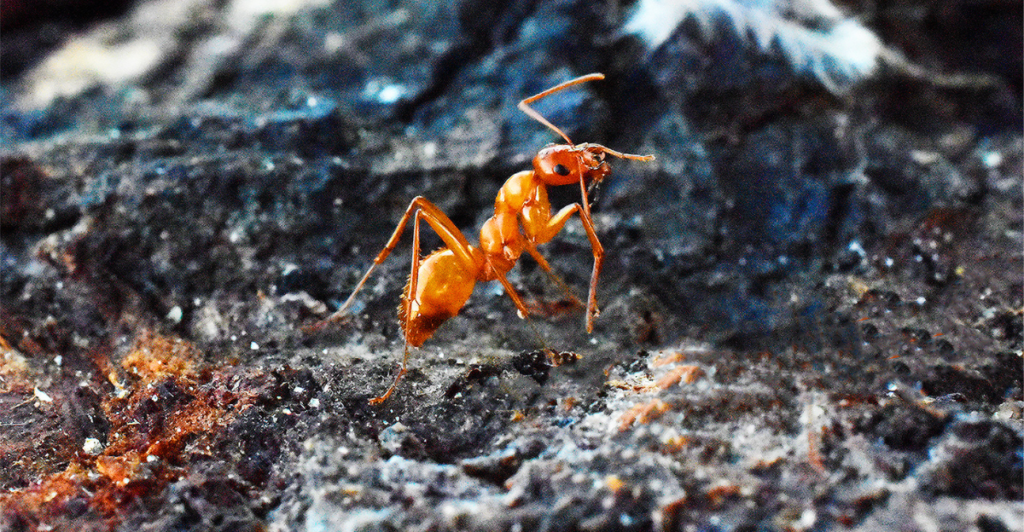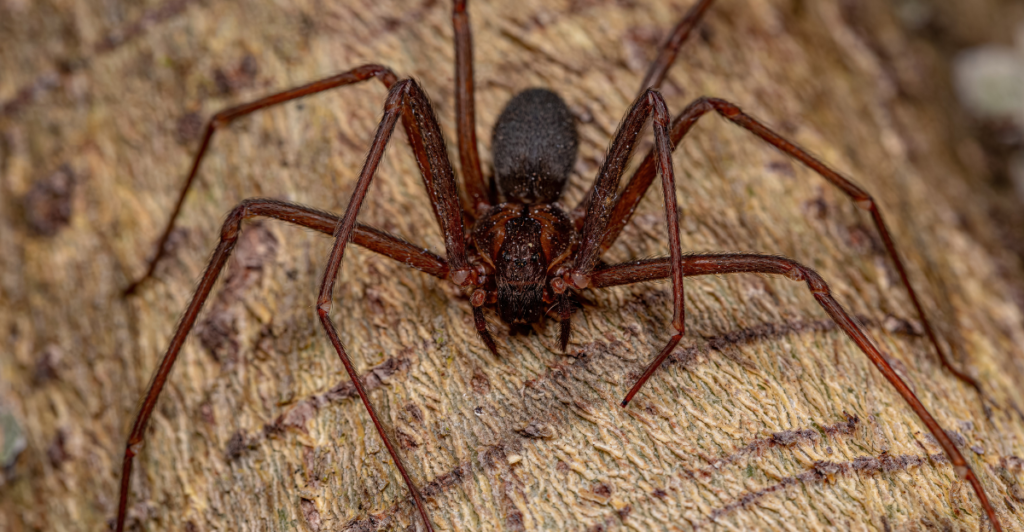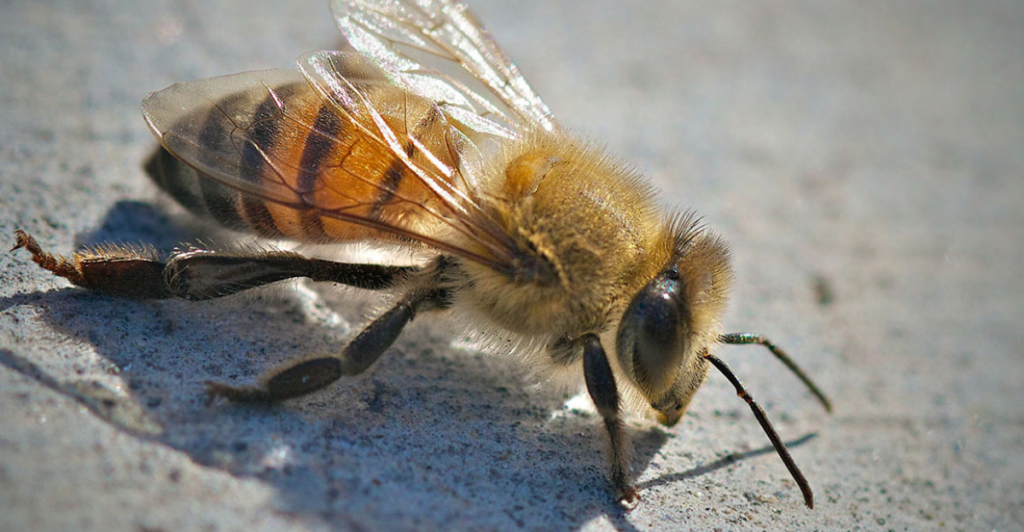
When you think of dangerous animals in the US, insects might not be the first thing that comes to mind. They might not look as intimidating as a bear, but they can be just as dangerous. These are some of the worst little critters to look out for.
1. Black Widow Spider

This is one of the most well-known and deadly spiders in the US. It is easy to spot by its glossy black body and the distinctive red hourglass marking on its abdomen. This spider usually tries to avoid humans but will bite when they feel threatened. Its venom contains a potent neurotoxin called latrotoxin, which can cause severe muscle pain, cramps, nausea, and even difficulty breathing. While black widow bites are rarely fatal, thanks to modern medical treatments, they can still be incredibly painful and require prompt attention.
2. Fire Ants

Fire ants may be tiny, but they are some of the US’s most aggressive and painful insects. These reddish-brown ants are known for their fiery sting, which delivers a venom that causes intense burning pain, swelling, and itchy blisters. Unlike other ants that bite and release, fire ants latch on with their mandibles and sting multiple times, injecting venom that can trigger allergic reactions in some people.
3. Yellowjackets

Unlike honeybees, which only sting once, yellowjackets can sting multiple times, injecting venom that causes intense pain, swelling, and, in some cases, severe allergic reactions. These wasps become incredibly aggressive in late summer, and early fall when their colonies are at peak numbers and food sources become scarce. A single sting can have some serious consequences.
4. Deer Flies

These insects might look like regular house flies, but don’t be fooled. These little critters are known for their painful bite and chasing off their target. Their bite causes a painful, itchy bite that can become swollen and irritated. In addition to the itch the bite causes, deer flies can also transmit tularemia, a bacterial infection that can lead to fever, ulcers, and swollen lymph nodes if left untreated.
5. Ticks

These insects are dangerous because they are so small and tend to go unnoticed for quite some time. Some species, like the black-legged tick (also known as the deer tick), are known for spreading Lyme disease, which can cause untreated fever, fatigue, joint pain, and long-term neurological issues. Other ticks carry diseases like Rocky Mountain spotted fever and anaplasmosis, which can be severe or even fatal.
6. Mosquitoes

They might not seem like much other than being extremely annoying when you’re trying to sleep, but because of the disease they spread, they are extremely dangerous. Mosquitoes are responsible for transmitting serious illnesses such as West Nile virus, dengue fever, and Eastern equine encephalitis (EEE), all of which can lead to severe complications and, in some cases, death.
7. Scorpions

Scorpions are scarier than insects, and for good reason. While most species have venom that causes only mild pain and swelling, the Arizona bark scorpion—the most venomous in the country—can cause severe symptoms, including intense pain, numbness, breathing difficulties, and muscle convulsions.
8. Kissing Bug

Their name might sound misleading, but they are known for their tendency to bite around the mouth or eyes. They are capable of transmitting a potentially deadly disease called Chagas disease. While a bite from a kissing bug typically causes mild irritation, the real danger lies in the parasite they can carry, Trypanosoma cruzi. If the bug defecates near the bite site, the parasite can enter the body through broken skin, leading to Chagas disease, which can cause long-term heart and digestive complications if untreated.
9. Blister Beetles

When threatened, these beetles release a toxic substance called cantharidin. This chemical causes blisters on the skin and can lead to severe irritation or even chemical burns if not handled properly. While blister beetles rarely bite, contact with their bodies or crushed beetles can cause skin reactions. In rare cases, ingestion of blister beetles by livestock or humans can lead to poisoning, with symptoms ranging from nausea and vomiting to organ damage.
10. Cow Killer

Despite its name, the cow killer—a type of velvet ant—is not actually an ant at all but rather a ground-dwelling wasp. Its sting has been described as one of the worst in the US but is rarely life-threatening. While it is not aggressive and typically stings only in self-defense, its venom causes intense burning, swelling, and throbbing pain that can last for hours.
11. Brown Recluse Spider

These are some of the deadliest spiders in the US, known for their venomous bite and ability to cause severe tissue damage. While brown recluse spiders are generally shy and not aggressive, they may bite if provoked. The venom they inject can lead to necrosis, where the surrounding tissue begins to die, resulting in painful, slow-healing wounds. Sometimes, the bite may cause systemic reactions such as fever, chills, and nausea.
12. Killer Bees

Also known as the Africanized honeybees, these critters are among the most aggressive in the US. These bees were introduced to the country in the 1990s and have since spread throughout the southern states. Their highly defensive nature sets them apart from regular honeybees—they will attack in swarms if they feel their hive is threatened. Their stings are not more venomous than a regular bee’s, but their sheer aggression and tendency to attack in larger numbers make them far more dangerous. While one or two stings might not be fatal, being stung repeatedly can be life-threatening.
Discover more of our trending stories and follow us to keep them appearing in your feed

The Rarest Fish on Earth is Thriving in Nevada’s Desert
The 10 Most Dangerous Cats in the World, Ranked
The American Gray Wolf: A Journey from Near Extinction to Revival
From Destruction to Renewal: 5 Inspiring Success Stories of Nature Restoration
References:
Reference 1
Reference 2
This article first appeared here
Stay connected with us for more stories like this! Follow us to get the latest updates or hit the Follow button at the top of this article, and let us know what you think by leaving your feedback below. We’d love to hear from you!







